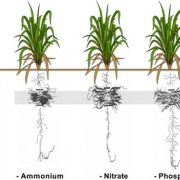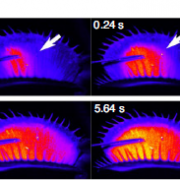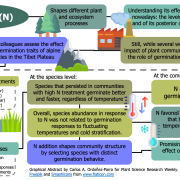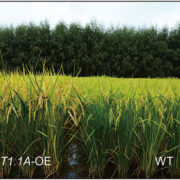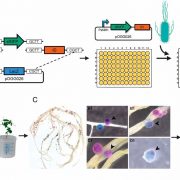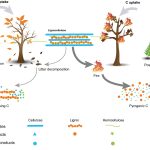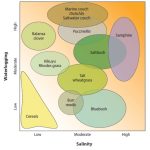Review: Difficult situations cause blushing in plants, much as they do in people
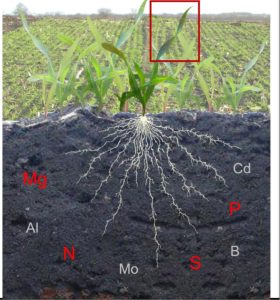 As with people, plants blush in difficult circumstances. Situations such as nutrient stress make plants uncomfortable, resulting in the accumulation of anthocyanins in different plant tissues and color changes in the tissues. Jezek et al. reviewed how and why anthocyanins accumulate in foliar tissues in nutrient-deficient plants. Anthocyanins accumulate in anthocyanoplasts or anthocyanic vacuoles in response to nutrient deficiencies, in patterns that are characteristic of the type of nutrient deficiency. N deficiency often results in chlorosis with leaf reddening or purpling in older leaves. P deviciency leads to increased chlorophyll density in the leaf accompanied by a dark blueish-green appearance, whereas Mg deficiency leads to chlorophyll degradation in mature leaves, and S deficiency causes purple coloration in young leaves. Color changes due to anthocyanin accumulation in micronutrient-deficient plants are also covered in this review. Other physiological responses resulting from anthocyanin accumulation under environmental stress are sugar accumulation, anthocyanins performing photoprotection roles, and ROS scavenging. Thus, anthocyanin-induced colour-changes in leaves can be used in designing optical devices for non-destructive diagnosis of nutrient stress in green plants. The genetic mechanisms underpinning anthocyanin accumulation in stressed conditions in various plants are still incompleteley understood. (Summary by Idowu Arinola Obisesan, @IdowuAobisesan) New Phytol. 10.1111/nph.18833
As with people, plants blush in difficult circumstances. Situations such as nutrient stress make plants uncomfortable, resulting in the accumulation of anthocyanins in different plant tissues and color changes in the tissues. Jezek et al. reviewed how and why anthocyanins accumulate in foliar tissues in nutrient-deficient plants. Anthocyanins accumulate in anthocyanoplasts or anthocyanic vacuoles in response to nutrient deficiencies, in patterns that are characteristic of the type of nutrient deficiency. N deficiency often results in chlorosis with leaf reddening or purpling in older leaves. P deviciency leads to increased chlorophyll density in the leaf accompanied by a dark blueish-green appearance, whereas Mg deficiency leads to chlorophyll degradation in mature leaves, and S deficiency causes purple coloration in young leaves. Color changes due to anthocyanin accumulation in micronutrient-deficient plants are also covered in this review. Other physiological responses resulting from anthocyanin accumulation under environmental stress are sugar accumulation, anthocyanins performing photoprotection roles, and ROS scavenging. Thus, anthocyanin-induced colour-changes in leaves can be used in designing optical devices for non-destructive diagnosis of nutrient stress in green plants. The genetic mechanisms underpinning anthocyanin accumulation in stressed conditions in various plants are still incompleteley understood. (Summary by Idowu Arinola Obisesan, @IdowuAobisesan) New Phytol. 10.1111/nph.18833


